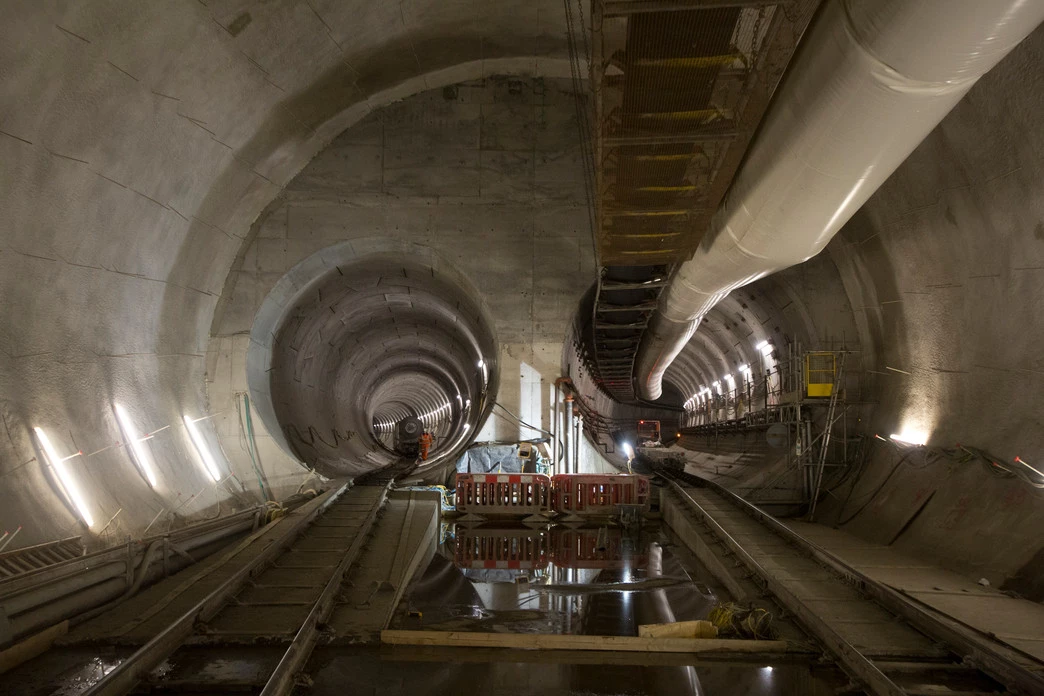Tunneling work has been completed for the UK's Crossrail rail link. Described as Europe's biggest construction project, it will create a new 118-km (73-mile) rail route. The route includes 42 km (26 miles) of newly dug tunnels that go straight through the center of London.
Tunneling began in 2012 and continued 24 hours a day, 7 days a week for over three years. Eight tunnel boring machines were used to create the 6.2 m (20 ft) diameter rail tunnels under London, the impressive scale of which was made plain when Gizmag photographed them earlier this year.
The end of tunneling means that the Crossrail project is now over 65 percent complete. Around, 250,000 concrete segments have been used in the construction of the tunnels and 7 million tonnes (7.7 million tons) of material has been excavated, of which 98 percent has been recycled. That figure includes about 3 million tonnes that has been transported to the Wallasea Island nature reserve in Essex to help restore the habitat there.
The focus of the project now shifts to fitting out the tunnels and stations. Around 13.5 km (8.4 mi) of new passenger, platform and service tunnels have been constructed within the new Crossrail stations, all of which require infrastructure such as wall panels, lighting and signage.

Once complete, the Crossrail route will connect Reading and Heathrow in the west to Shenfield and Abbey Wood in the east, with 40 stations along its route. It will carry an estimated 200 million passengers each year, adding 10 percent capacity to London’s rail network at a stroke.
Once it becomes operational, the new line will change the complexion of certain areas in London. Farringdon, for example, will become one of the UK's busiest rail hubs, changing the way in which passengers travel through London and the South East and adding new direct connections to the international rail services at St Pancras and to three of London’s five airports.
Services through central London will commence in December 2018.
The video below provides a drone's-eye-view of Crossrail's completed rail tunnels.
Source: Crossrail








